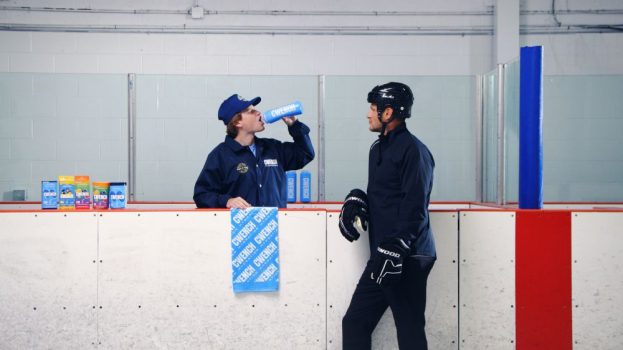
As event cancellations, travel restrictions and limitations on public gatherings rolled in between Wednesday evening and Thursday afternoon, major grocery retailers faced over-crowding from consumers looking to stock up on items, with lines snaking through aisles and outside front doors in some cases. Photos on social media showed bare shelves where products – specifically toilet paper, disinfectants and shelf-stable sauces and canned foods – were in short (and sometimes no) supply.
Strategy reached out to Canada’s major grocery retailers for comment, but requests were directed to the Retail Council of Canada, which is currently handling all media communications for grocery banners in Canada.
 Marc Fortin, president of the Retail Council of Canada, says the crowding and stock issues were widespread across the country, not just in urban centres where spread of COVID-19 has largely been centralized as of this week. He noted that the news in the previous 24 hours – which included travel restrictions in the U.S., provinces implementing new rules on public gatherings of more than 250 people and cancellations of events ranging from conferences to sporting events – resulted in a “panic” in the population.
Marc Fortin, president of the Retail Council of Canada, says the crowding and stock issues were widespread across the country, not just in urban centres where spread of COVID-19 has largely been centralized as of this week. He noted that the news in the previous 24 hours – which included travel restrictions in the U.S., provinces implementing new rules on public gatherings of more than 250 people and cancellations of events ranging from conferences to sporting events – resulted in a “panic” in the population.
“They were thinking ‘everything is going to close,'” Fortin says. “But we’re not closing, and we are not part of those gatherings that premiers are talking about. There is no reason to rush for a store.”
Supply chain issues have been frequently cited as a potential business risk during a pandemic, and many retailers have been releasing statements about doing everything they can to ensure their supply chains are able to keep products in stock. It’s a sentiment Fortin echoed, citing investments over the years resulting in Canada being ranked number two in the world for food safety in stores and number three for supply chain management. He cites how grocery stores were able to adapt to the CN Rail blockades earlier this year and keep shelves stocked as example of how the industry has been able to adapt to unexpected issues that disrupt supply chain. He says retailers are also able to do things like switch from global to local suppliers in the event it becomes difficult to import goods.
The more disruptive issue for retailers, Fortin says, is store overcrowding. “Everybody is producing, our warehouses are being filled,” he says. “But when everyone is emptying the stores because of what is happening on the news, it just takes us time to replenish the stores, which is the issue we’re seeing.”
 Fortin says that the RCC’s members aren’t interested in limiting the amount of people allowed in the store at a time, as the likelihood of having more than 250 people in a store is low, as is transmission between shoppers, so long as everyone follows proper preventative measures, which are being communicated in most stores.
Fortin says that the RCC’s members aren’t interested in limiting the amount of people allowed in the store at a time, as the likelihood of having more than 250 people in a store is low, as is transmission between shoppers, so long as everyone follows proper preventative measures, which are being communicated in most stores.
“We have a responsibility to each other as Canadians to make sure we also manage some of this,” Fortin says, adding that investments made into delivery services are particularly useful at this time. “If you’re sick, don’t go out and don’t go to stores. Please order online and get it delivered.”
Earlier this week, T&T CEO Tina Lee said in a statement that it saw a sizeable increase in the number of online delivery orders from customers, resulting in a small delay in fulfillment.
While many major retailers globally have limited the number of certain products a customer is able to buy in a given trip – be it to manage supply, prevent hoarding or respond to reports of customers re-selling in-demand products online – Fortin says RCC members have not yet implemented such limits, though some regions are keeping it in mind as an option.























